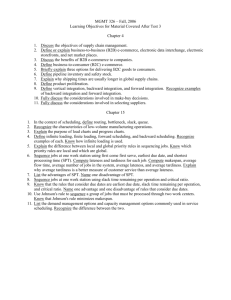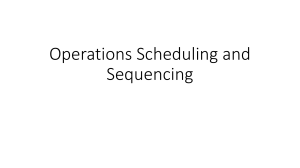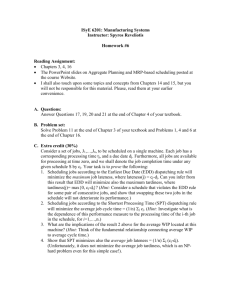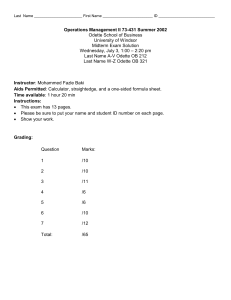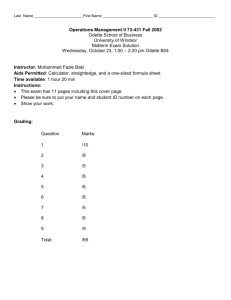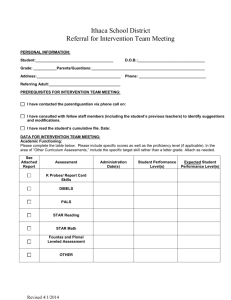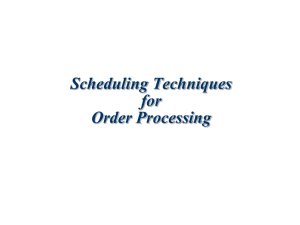Corrected Worksheet for Chapter 15
advertisement
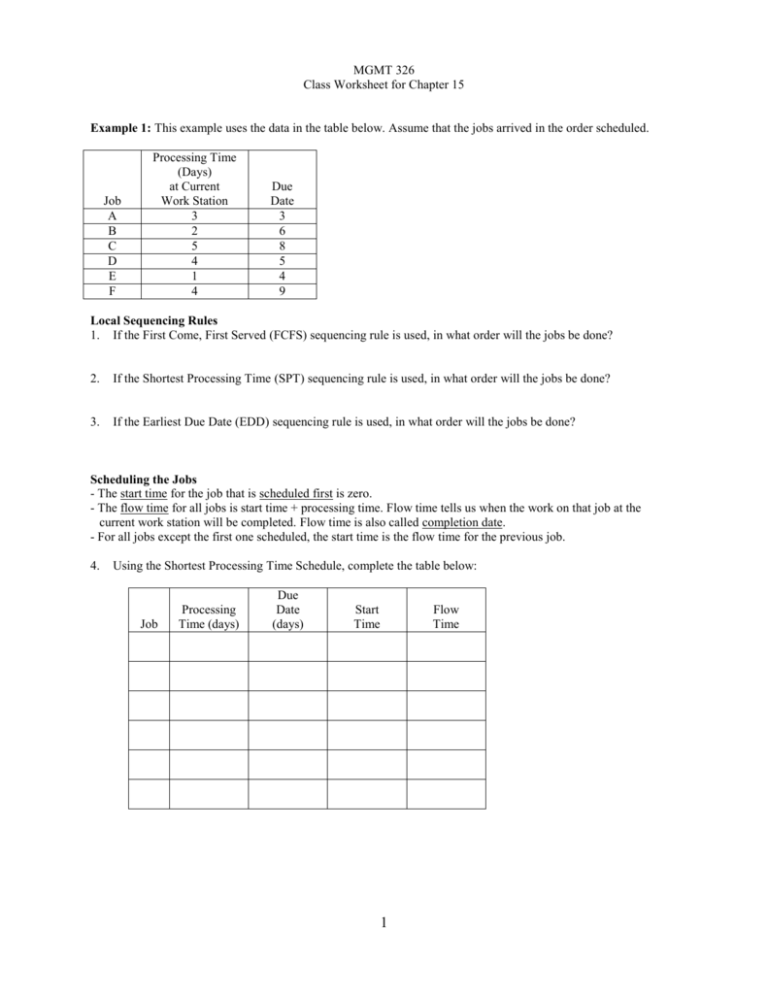
MGMT 326
Class Worksheet for Chapter 15
Example 1: This example uses the data in the table below. Assume that the jobs arrived in the order scheduled.
Job
A
B
C
D
E
F
Processing Time
(Days)
at Current
Work Station
3
2
5
4
1
4
Due
Date
3
6
8
5
4
9
Local Sequencing Rules
1. If the First Come, First Served (FCFS) sequencing rule is used, in what order will the jobs be done?
2.
If the Shortest Processing Time (SPT) sequencing rule is used, in what order will the jobs be done?
3.
If the Earliest Due Date (EDD) sequencing rule is used, in what order will the jobs be done?
Scheduling the Jobs
- The start time for the job that is scheduled first is zero.
- The flow time for all jobs is start time + processing time. Flow time tells us when the work on that job at the
current work station will be completed. Flow time is also called completion date.
- For all jobs except the first one scheduled, the start time is the flow time for the previous job.
4.
Using the Shortest Processing Time Schedule, complete the table below:
Job
Processing
Time (days)
Due
Date
(days)
Start
Time
Flow
Time
1
5.
Using the Earliest Due Date Schedule, compute Start Time and Flow Time in the Table below:
Job
Due
Date
(days)
Processing
Time (days)
Start
Time
Flow
Time
Example 2: In a job shop, 4 jobs have been scheduled. The table below gives the due dates and completion dates for
each job:
Job
A
Completion
Date
10
Due
Date
15
B
13
15
C
17
10
D
20
20
Lateness
Tardiness
Lateness and tardiness:
For any job, lateness = flow time – due date
0 if the job is on time
}
Flow time − due date if the job is late
For any job, tardiness = {
Average lateness =
Average tardiness =
Average lateness can be zero or negative even if some jobs are late
Average tardiness measures due date performance.
6.
Using the information for Example 2, compute lateness and tardiness for each job.
7.
Compute average lateness and average tardiness for the 4 jobs.
sum of lateness for all jobs
number of jobs
sum of tardiness for all jobs
number of jobs
2
Other performance measures:
The makespan for a set of jobs is the time to process all of them through a workstation.
Makespan = completion date for the last job
Average flow time =
Average number of jobs in the system =
sum of completion dates for all jobs
number of jobs
sum of completion dates for all jobs
makespan
Some information from Example 2 is repeated below for your convenience:
8.
Job
A
Completion
Date
10
B
13
C
17
D
20
Using the information in the table, compute makespan, average flow time, and average number of jobs in the
system.
3
Global Sequencing Rules – Slack time remaining per operation
For each job, slack time per remaining per operation (S/RO) =
Schedule the jobs from lowest to highest S/RO.
slack time remaining
number of operations remaining
Example 3: Data for jobs A – E is given:
Job
A
Slack time
Remaining (days)
5
Operations
Remaining
2
B
3
4
C
9
3
D
5
4
E
6
3
Slack Time Remaining
per Operation
9. Compute Slack Time Remaining per Operation for each job.
10. In what order should the jobs be scheduled?
Global Sequencing Rules – Critical Ratio (CR)
For each job, the critical ratio =
Due date
Total processing time remaining
Schedule the job with the lowest critical ratio first.
Example 4: Data for jobs A – D is given:
Job
A
B
C
D
Due date
8
4
10
6
Total Processing Time Remaining
2
5
4
4
11. Compute the Critical Ratio for each job.
12. In what order should the jobs be scheduled?
See also: Johnson's rule, pages 572-574.
4
Critical Ratio
